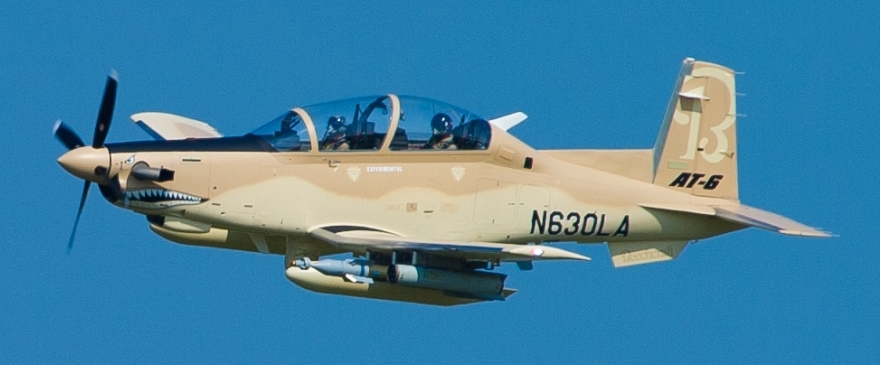|
|
||
|
||
|
Privacy Policy | Editorial Policy | Profit Policy | Join the Association | List of Members | Contact us | Index | Links |
||
|
Back Go to page: 1 2 3 4 5 6 7 8 9 10 11 12 13 14 15 16 17 18 19 20 Forward
|
||
|
John Laming Aircraft and other stuff. |
||
|
|
||
|
A Farewell to KK
His name was Flight Lieutenant Keith King Wilson, a pilot in the Royal Australian Air Force. In 1953 I was his co-pilot on Lincoln bombers. His nick-name was KK to those who knew him in the RAAF but to me he was always “Sir” because I was an airman and he was an officer. When flying together his crew called him “Skipper” and in turn he addressed his crew by their position in the aircraft. We became Navigator, Signaller, Bomb Aimer, Rear or mid-upper or nose gunner, and I was Co-pilot.Off duty, KK addressed us by rank which is why he would call me “Sergeant.”
During World War 2, KK flew British Handley Page Halifax four engine heavy bombers in raids over Occupied Europe. In 1953, eight years after the end of the war, many of our squadron aircrew were former wartime veterans who had flown against the Germans in Europe or the Japanese in the Pacific. They rarely talked about their experiences which is why I had no idea that KK had flown many operational missions over Occupied Europe. That is, until a while ago when I saw his Obituary and that he died on the 17th September 2016 in Brisbane - aged 92. His funeral service was held at the Graceville Presbyterian Church (Brisbane) on the 22nd September.
Edited extracts from his Obituary stated: “The young Pilot Officer Keith Wilson (or “KK” as his crews would know him throughout his career) flew in a squadron based on the clandestine airfield Tarrant Rushton in the English midlands. Their task was to serve as transports for the S.O.E. The S.O.E (Special Operations Executive) were the precursors to the M16 in England and the CIA in the US. They were Winston Churchill’s spy network. KK’s squadron dropped personnel and supplies behind enemy lines under the cloak of darkness by flying at frighteningly low altitudes over the ocean and then between the hills to drop zones – with their only means of defence being evasion.
Growing up, his children were regaled with tales of flying over Europe,
surviving odds which seemed unimaginable – flying stricken planes back
to base with his crew decimated, or in squadrons in which his craft was
the sole survivor with stories of evading enemy aircraft by flying his
bomber under power lines, or flying at ground level through towns
Until the day he died, KK felt bound by duty to keep secret his untold service as an operative in the S.O.E. Not only a pilot during his service in England, and unbeknown to his fellows, Keith was also trained by S.O.E to perform on the ground as an operative behind enemy lines. It wasn’t until later years, when he was well into his eighties, his family were made aware of these activities; the intensity of his training; and ultimately, his activity on the ground in France – while all the while performing his duties as a pilot in the most dangerous theatre of the war.
After World War 2 Keith had a diverse career in the RAAF serving in South-East Asia including stints in Malaya where he flew missions in the Malayan Emergency. With Lincolns being used as the RAAF long-range aircraft, he also spent several years in countless hours of Air Sea Rescue operations off the shores of Northern Australia. In 1952, during British nuclear weapons tests on Monte Bello Island to the NW of Australia, KK and his crew flew several sorties in a Lincoln bomber taking samples from the nuclear cloud.”
In 1953, as a newly graduated co-pilot on Lincolns, I had little idea of KK’s or any other of our squadron’s aircrew previous wartime experience. Medal ribbons were not worn in tropical Northern Australia which meant there was no way of identifying those who had served overseas in war zones. Through the grapevine of the bar in the Sergeants Mess, I learned that most pilots disliked flying the Long Nose Lincoln at night. In modern parlance the Lincoln was a 38 tonne tail dragger and because it carried special anti-submarine electronic gear plus extra crew, the aircraft had a much longer nose than the original design. A crosswind from the wrong side combined with lack of forward vision over the nose, made it difficult to land in even daytime.
Night take-offs and landings were worse because the pilot could only see one runway light either side of the nose during the initial take off run with the tail down.
For landing at night some pilots would whip open a cockpit side window at touch down. After loosening their safety harness, pilots would pull down their flying goggles then lean outside the cockpit sliding into the airflow to try and see more runway lights on which to keep straight. It was no wonder some pilots were apprehensive of night landings.
KK was one captain who would sometimes take extraordinary steps to avoid
The picture of the Long Nose Lincoln above well illustrates why this aircraft was difficult to land especially at night in any crosswind. The long nose blocked the pilot's view of the runway as you flared for the landing and was worse when the tail was lowered during the landing run. Any crosswind made it worse. Initial part of the take-off run was a problem too, until you got the tail up.
After a three-day search by RAAF and US SAR aircraft covering the islands of New Britain, New Ireland and tiny atolls in between, the Canberra was found intact but out of fuel on the beach of an uninhabited atoll 90 miles from Kwajalein. The two crew (pilot and navigator) were eventually rescued by a Kwajalein based Grumman Goose amphibian of the US Navy.
Two weeks earlier, another RAF Canberra bomber with its two man crew disappeared on the same route and no trace was ever found. It was thought the aircraft had probably encountered a severe thunderstorm front and broke up in mid-air. As before, several Lincoln bombers including one flown by KK with myself as co-pilot, were dispatched from Townsville to Momote to search for the second Canberra.
The landing at Momote airstrip I shall not forget in a hurry. KK held off too high above the 5200 feet coral surfaced runway and stalled at 20 feet. The Lincoln hit extremely hard on three points but didn’t bounce due probably to lack of flying speed. KK was quite proud of that landing saying “The way I land ‘em, they never bounce.”
One another occasion, I was his co-pilot for a midnight departure from Darwin to our home base at Townsville; the flight being normally six hours. Our crew were ready to board when we discovered KK was missing. One of the crew suggested we go to the officers sleeping quarters where visiting aircrew normally stayed. The dog slept in his quarters at the Darwin Officers Mess.
Sure enough, we found KK in his flying suit walking around looking for his dog. Our navigator suggested maybe the dog had been left in KK’s quarters. We soon found the dog in the sleeping quarters and it was happy to see us. It was now past midnight as KK and his dog finally reached the aircraft which I had pre-flighted earlier.
At 0100 on Darwin’s main runway, KK tested each engine to check the temperature and pressures, propeller pitch controls and magnetos. He asked me if I could detect rough running on one of the engines. They all sounded perfectly normal to me but KK insisted running the perceived defective engine at high power until eventually its coolant (liquid cooled Rolls Royce Merlin engine) over-heated beyond limits for take-off. Clearly we were going nowhere. We taxied back to the tarmac; finally departing at dawn with no sign of a rough running engine
At a squadron party, I had enough drinks under my belt to summon the courage to ask KK’s wife why it was that her husband avoided night flying whenever he could. She thought it was probably because of his experience during one night mission during the war, where his Halifax squadron had dispatched several aircraft to drop agents by parachute into occupied France. The drop was successful and it was still night when all aircraft set course for England via an alternate route, to avoid enemy night fighters and which took them over Norway with its high terrain. KK decided to fly at a higher altitude than the others. It wasn’t until he landed back at base he discovered he and his crew were the sole survivors of the mission. The rest of the formation had been caught by standing wave activity over the mountains and crashed. What a dreadful experience for a young 22 year old pilot. I wished then I had known more about KK’s wartime background which may have explained his aversion to night flying nearly ten years after the war had ended.
|
||
|
Landing on a ship during the daytime is like sex, it's either good or it's great. Landing on a ship at night is like a trip to the dentist, you may get away with no pain, but you just don't feel comfortable.
|
||
|
Deadsticking a Mirage.
When Australia acquired the Dassault Mirage in 1963, it represented a
great leap forward in fighter technology for
Both aircraft were test flown extensively in France while #3 and #4 came off the production line and were factory tested. After satisfactory tests, both #3 and #4 were broken down for transit to Australia via C-130 Hercules. Following arrival at Avalon, Victoria, these aircraft were reassembled by the Government Aircraft Factories and again test flown before acceptance by the RAAF.
A3-1 was freighted to Avalon during this period, followed much later by A3-2. A3-1 was launched quickly into a test program aimed at determining performance in the tropical atmosphere; surge boundaries, gunfire induced surge, shock cone operation and many other aspects which could not be achieved in France. Bill Collings flew the majority of this program. Click the pic at right to see AWM video of the maiden flight of the first Australian assembled Mirage (A3-3) at Avalon on the 16th November 1963 (sorry - no sound). The video shows a long shot of the Mirage taxiing on the runway, taking off and landing. It also shows the Squadron Leader Bill Collings (later AVM Bill Collings, Deputy Chief of the Air Staff. 1985–87) in the cockpit of the aircraft. He is greeted by VIPs including Air Marshal Hancock.
On December 7 1964, after Bill had moved on to Paris (a tough job but somebody had to do it), A3-1 was engaged in investigating the effects of angle of attack (alpha) on the surge behaviour of the Atar 9K, specifically the combination of alpha plus rate of change of alpha (alpha dot). SqnLdr Tony Svensson, an RAF test pilot on loan, was at the controls. At times the aircraft was operating at 35-45,000ft in very hazy conditions with a poorly defined horizon and little visual reference to ground features.
Six of the planned eight test points had been achieved and the aircraft commenced a wind up turn for the seventh. The aircraft apparently departed shortly after the entry to the turn and the pilot reported to the test control room “I’m spinning”. At this stage, little was known of either the spin characteristics or the recovery procedures of the Mirage III-O. Equally, the concept of inertia coupling was largely limited to academics. It was much later that we were able to document the extremely oscillatory roll/yaw characteristics together with the major pitch angle excursions, swinging from +200 to -7O0.
Tony Svensson was advised to maintain positive spin recovery control, control column held neutral in pitch and with full in-spin roll control. He acknowledged this instruction and his next comment was to the effect that the oscillatory behaviour was becoming more violent and if he did not have recovery by 10,000ft, he intended to eject. There was one final unintelligible transmission followed a second or so later by a strong sonic boom, followed in turn a second later by the explosive sound of a high-speed impact. The aircraft had, in-fact, crashed close to the airfield.
Tony was recovered, badly injured, with both legs broken and numerous dislocations. It was said he ejected in an 80° dive, at about 9000ft and at transonic speed or higher. He later died on the 29 June 2009, aged 78 yrs.
The subsequent inquiry concluded the aircraft bad probably recovered from the spin condition during a down swing of pitch angle and commenced to accelerate with full roll control being maintained, with the pilot lacking visual clues initially because of poor visibility and then subsequently being subject to the extreme effects of severe inertia coupling (note that application of full roll control at 15,000ft produced a roll rate of 330°/second).
This left the RAAF without a Mirage III-O instrumented for the very large outstanding performance program and the decision was made to carry out a major upgrade of the instrumentation on A3-2.
Over several months, the instrumentation system was upgraded to give the capability needed to carry on from A3-l. The eventual instrumentation fit for A3-2 was a very comprehensive set of sensors and recorders, capable of recording data over a wide range of variables. In June 1965, I took over the activities of A3-2 and we embarked on a flight clearance program for a wide variety of weapons, with and without external tanks. This program proceeded without major problems until February 1966 when the aircraft became due for a major service. This had to be done at RAAF Williamtown, since it was not cost effective for ARDU to hold such GSE (ground support equipment). AS-2 was duly delivered to the Maintenance Squadron at Williamtown during the first week of February
On April 11, Williamtown advised A3-2 would be ready for return on the 14th. I was dropped at Williamtown on the 13th, in readiness for the acceptance test flights and transit to Avalon the following day. Two test flights were required following a major servicing. The first was a functional check flight (FCF) to prove every system was working satisfactorily - a standard FCF profile required about 50 minutes. The second flight was a performance check, involving acceleration from Mach 0.9 to Mach 2.0 at 36,000ft.
There were a few small problems after the FCF but these were rectified within two hours after engine shut down. On the second flight, the supersonic acceleration time was within tolerance, although the aircraft developed considerable yaw due to a binding slide on the engine nozzle actuator. This was considered acceptable for the ferry flight to Avalon, which was flown late that afternoon.
After an uneventful arrival, the aircraft was placed or jacks ready for the instrumentation team the following day (Friday). Reconnection, reactivation and testing of the instrumentation required three working days, and the aircraft was scheduled for flight on the 20th. The first task for A3-2 was to establish baseline performance of the clean aircraft after servicing and check the operation of the instrumentation. This required measurement of climb performance using both dry and full afterburner thrust, a selection of speed/power points and an instrumented acceleration Mach 0.9-2.0. The first flight made the climb with full dry power. It should be noted that we called flight and engine parameters, together with fuel remaining, every 5000ft back to the flight test control room where all transmissions were recorded.
This meant an active series of transmissions during a dry power climb to ceiling — during a climb with full afterburner, it became a rapid-fire continuous monologue. It not only served the purpose of providing backup information in the event of instrumentation going out, but also kept the engineering staff in the picture of what was happening and where. A series of speed/power points were flown as the aircraft proceeded along the Victorian coastline towards Cape Otway. At some 40nm (75km) southwest from Cape Otway, the aircraft was turned on to a northeast heading at 35,000ft and slowed to Mach 0.85. (Again, during acceleration, voice transmissions were made at each 0.1 Mach giving engine and flight parameters, together with fuel remaining).
Full afterburner was selected and the acceleration begun with the aircraft paralleling the coastline some 20nm (37km) offshore. Shortly after passing abeam Geelong the speed reached Mach 2.0, power was reduced to maximum dry and the aircraft placed in a limit turn (full up elevon) to starboard to minimise the possibility of dropping a sonic boom on Melbourne’s bay side suburbs. Power was reduced to idle during the turn which was continued until the nose was pointed at Avalon. Recovery was uneventful.
The instrumentation engineers were ecstatic — their black boxes had all worked. A3-2 was serviced ready for the next flight. This flight plan called for a full afterburner climb to ceiling followed by a series of speed/power points during a slow descent to Avalon.
Departure to the south was routine and the aircraft flown at 300kt/500ft across the Bellarine Peninsular before turning southwest. The start altitude for this climb was l000ft, and the climb schedule was 400kt/Mach 0.9. Consequently, the workload was high prior to this start point. The engine had to be brought up from cruise to maximum dry stabilised, the afterburner lit, stabilised and advanced to maximum, all before the aircraft reached 400kt (740km/h) and l000ft. This was achieved and we started the climb with a pitch angle of 28-30° nose up and began the busy monologue of data transmissions. The climb was smooth to 25,000ft. I had just started to call the engine parameters when there was muffled “woomph” and everything was suddenly very quiet with the engine revs running down and airspeed falling off. This probably occurred about 26-27,000ft. My reaction was compressor stall, and as I turned back to Avalon, I closed the throttle and dived to keep up the airflow to the engine.
At 450kt (835km/h) or so the engine was continuing to unwind so the
aircraft was recovered to level flight at about 470kt (870km/h).
Position at this time was about l6nm (30km) southwest from Geelong, with
altitude around 17,000ft. The aircraft was heavy, with about 2400 litres
of internal fuel. Those who have time in the Mirage will know that
without an engine it has the glide angle of a manhole cover with rough
edges. Best glide speed is 300 KIAS and it covers
A descending turn through 270° is then flown to touch down, with the landing gear being selected down when a key point is achieved. The pattern speed is 240kt (445km/h) (the limit for lowering the landing gear) and the minimum until established on final. With the gear down, limit speed is 270kt (500km/h). The sink rate is very high, around 20,000ft/min and this requires the aircraft to maintain a high-energy level to kill this. The landing flare is normally initiated at 500-600ft. It was obvious that A3-2 was not about to carry out a textbook flameout landing, if it was going to land at all. In conjunction with engineering help, I did a full trouble shoot but without success. Throughout this, I was slowly bleeding airspeed for altitude. The engine speed was now falling very slowly and eventually settled around 4000rpm, but slowly crept down as altitude decreased. Hydraulic pressures remained at normal values. At 4000ft over southern Geelong, I decided to continue to 2000ft and make the decision to stay or leave there. As I came over Colo Bay at about 3500ft, with the airspeed bleeding slowly through 290kt (537km/h), it appeared there was a chance of making the Avalon northern runway. All other aircraft had been cleared to the northern side of the Geelong Road. I decided to ride it down to 1000ft and make another decision there. By 1500ft, the aircraft was approaching the north shore of Colo Bay and lined up with the northern runway. Hydraulics were still holding but engine speed was down to 2800rpm without any T4 indication (Exhaust Gas Temperature Indicator). I thought I could still leave the aircraft safely at 500ft at the present sink rate and moved the decision height accordingly.
From the production testing that I had done and having some confidence
in the hydraulics, I decided to leave the gear extension until about 30
feet during the flare. The gear required 3.0-3.5 seconds to lock down
under normal conditions. At 500ft and crossing the airfield boundary I
made the decision to continue, quietly hoping like hell the bottom would
not drop out of the hydraulic systems when I selected the gear down.
Approaching about 100 metres from the threshold, I started a very gentle
flare at 220kt (408km/h), and when the altitude was about one wingspan,
selected gear down. After
Engine rpm were now down to 2600 or so and did not respond to any action I took other than final shutdown. The aircraft did not sustain any damage from its cross-country tramp to the runway, even though the left main wheel dislodged a two metre long plank of wood. We only had to clean the grass from the bottom of the engine nozzle.
The cause. The cause of this unscheduled return to base was found the next day after the formal investigation was launched. The Atar 9K turbojet has a low pressure fuel pump and a high-pressure pump combined into a single assembly. The low-pressure pump is a centrifugal unit. When the pump unit was removed for disassembly, the problem became obvious — a bright yellow plastic blanking plug was resting neatly in the eye of the impellor of the low-pressure pump. Such plastic plugs were standard items used to prevent the ingress of foreign material into engine lines during servicing. The immediate action following this discovery was the quarantine of all such plugs, replacing them with plastic caps. Some questions will never be answered: How did the plug get pushed into the fuel system line? Where did it hide during the ground running at RAAF Williamtown (the fuel flow rate at full afterburner is very impressive)? Where did it hide during the FCF and Mach 2 flights at Williamtown, the transit to Avalon and the Mach 2 flight there? And what made it decide to dislodge during a stabilised flight condition with decreasing fuel flow?
Ron Green was a RAAF pilot during the period 1950 – 1984, and was initially involved in fighter operations and specialised in Flight Test, Development and Evaluation. He concluded his service as CO of ARDU.
|
||
|
There is an art to flying. The knack lies in learning how to throw yourself at the ground and miss.
|
||
|
Navigating in the old days. John Dill.
Flying in my little single-engine Cessna, my yoke mounted GPS unit gives me my exact position anywhere on the face of the earth, as well as a host of other valuable information and is a marvel of modern technology. It wasn’t always so. I was a crewman on a US Navy land-based long-range patrol plane (P2V Neptune) back in the early 1960s and back then it was a little different.
All of my flying was done in the Pacific between the West Coast of the
US and the Far East. We hit just about every
The Neptune was a twin-engine (with two small jet engines added in later models to increase takeoff performance) mid-wing aircraft with a crew of 10. Two pilots, navigator, tactical coordinator, flight engineer, radio operator, radar operator, two sensor operators, and an observer/mad operator. Neptunes were unpressurized so they normally stayed below 10,000′ to avoid wearing oxygen masks. Our absolute service ceiling was about 30,000′. Long-range cruise speed was 180-200 kts, so a trip from San Francisco to Hawaii was 10 to 12 hours depending on winds aloft. I made that crossing seven times.
All crewman wore flight suits, survival vests, mae-wests, parachute harnesses and headsets plugged into the intercom system. In Arctic climes we had to wear waterproof rubber POOPY suits with watertight hand, leg and neck cuffs. Those were like being enclosed in a plastic bag and we would lose a few pounds from perspiration after a long flight.
Our old Neppies were noisy, draughty and smelled of oil, gasoline fumes (on long flights we carried two reinforced rubber gasoline bladders hung in the bomb bay, and they leaked like hell), exhaust fumes, electrics, etc. But it was perfume to me. The front and rear of the plane were separated by the main wing beam with a tunnel provided for passage. My position in the radio compartment was just aft of the wing beam. I have many memories of exciting and terrifying times on the P2V but in this missive I want to talk about navigation. How did we find our way across the vast Pacific in those primitive days?
With a slide rule and a map, US Navy airplanes flew all over the world.
Our primary nav method was “Dead Reckoning”
One of the primitive tools we used was called a driftsight. It was sort of an inverted periscope extending from the belly of the aircraft. Laying flat on the deck, one could look through the driftsight at the waves below, assuming we were below the clouds. We lined up two parallel cross hairs in the eyepiece with the movement of the waves, and then could measure our crab angle, or the difference between the aircraft heading and its actual track. Knowing our true airspeed, we could then compute the winds using simple geometry. At night or in clouds, that was impossible, of course, and most of our flights seemed to be at night.
We also used LORAN (Long range air navigation). These stations, manned by the Coast Guard, were scattered all over the Pacific and were the first real high tech tool available to us back then. I’ll do my best to explain how LORAN works, briefly. Suppose you’re standing on the beach at Waikiki with a LORAN receiver. Two stations, one on Guam, the other at San Diego, transmit a signal towards you at the exact same instant. The signal from San Diego will arrive first, followed milliseconds later by the signal from Guam.
The LORAN receiver measures the time interval and knowing that, we could
compute a line of position. Now, you do the
When we were in clear weather or above the clouds, hardly ever it seemed, we used my favourite, the sextant. I bugged the navigator to teach me celestial navigation and after a while he would let me take the star shots. I stood on a stool near the nav station and looking through the sextant eyepiece would try to keep the chosen star in the middle of two crosshairs and a bubble which were both jumping all over.
The “bubble sextant” was devised for unstable aircraft and included an
averager to even out the wiggles. You tried to keep the star,
crosshairs, and bubble cantered for two minutes, some mean feat in
turbulence. A sextant measures the altitude (inclination) of a star, or
its angle above the horizon, and its azimuth, or angular distance from
true north. The bubble represented our horizon, like a level. Now, if
you shot the right star, you had its angle above the horizon and
We’d tune in to a continuous radio broadcast from the Naval Observatory to get a “time tick” as watches in those days were not accurate enough. Big errors were common due to things like shooting the wrong star (on a coal black night over the Pacific there are millions and millions of them), sloppy aiming, or reading the incorrect angle, or data in the Almanac. But if you were careful, you’d come close and it was really satisfying to now feel like you knew where you were.
Just a note here to say I’m impressed to this day with the professionalism and competence of those guys I flew with. We all were masters of our craft and depended on each other with our lives. Our aircrew was a tight knit unit and every man strived to do his best. On many an occasion that got us through a bad situation without a scratch.
Often, we’d be flying in terrible weather for hours, unable to get either a LORAN fix or a star shot. We’d then truly rely on dead reckoning using just our magnetic heading and airspeed to compute a position. If fuel was ample, we’d sometimes attempt to climb above the clouds for a star shot, but not knowing the cloud tops, we often could not risk burning the extra gas to climb.
On one occasion, flying from Midway Island to Japan, (about 2400 miles),
we were totally lost, not having been able t
Modern navigation to me is incredible. I look at my small GPS unit and am awestruck by its capabilities and think back to those days when we hardly had a clue. It was teamwork and perseverance we relied on then. Today, if you use a moving map display you know exactly where you are within a few feet. Now that’s amazing!
|
||
|
When flying, the strength of the turbulence is directly proportional to the temperature of your coffee.
|
||
|
Angle of attack.
Angle of attack is one of the most important concepts for any pilot to understand. It literally determines when an airplane flies and when it doesn't. Unfortunately, it's also one of the most misunderstood concepts in aviation. In this video tip, the Sporty's Academy team dives into angle of attack to explain what it really means. With in-flight video and 3D animations, we'll show you how to visualize angle of attack as you fly. Plus, we'll introduce you to some of the new generation of AOA instruments that are starting to appear in light airplanes. See HERE.
|
||
|
The three worst things to hear in the cockpit: The second officer says, "Oh shit!" The first officer says, "I have an idea!" The captain says, "Hey, watch this!"
|
||
|
Low-Cost, Light-Attack Aircraft for USAF gains Momentum
US Air Force officials have expressed support for a senate proposal to acquire several hundred low-cost light-attack and observation aircraft. As proposed, “the Air Force should procure 300 low-cost, light-attack fighters that would require minimal work to develop. These aircraft could conduct counterterrorism operations [COIN], perform close air support [CAS] and other missions in permissive environments and help to season pilots to mitigate the Air Force’s fighter pilot shortfall.”
The Air Force has been supporting CAS and COIN operations with sophisticated multirole aircraft like the F-16, F/A-18, and F-22, which cost tens of thousands of dollars per hour to operate, fly at speeds ill-suited to low-altitude missions and require the resources of a large airbase or aircraft carrier for sustained operation. Excitement for low-cost, light-attack aircraft has been kindled by the ballooning unit cost of the Lockheed-Martin F-35—now hovering around $100 million. Aircraft proposed for evaluation by industry experts have a unit cost on the order of $10 million and a cost per flight hour under $1,000.
Support for the aircraft purchase hinges on availability of an off-the-shelf design, rather than funding development of a new airframe from government coffers. Speaking at the American Enterprise Institute on the future of American airpower, USAF Gen. David Goldfein said, “We're actually right now looking at an experiment where we go out to industry and ask, 'What do you have, commercial-off-the-shelf, low-cost, that can perform this mission?’ We're going to do this experiment and just sort of see what's out there, and I expect many of the companies to come forward.”
|
||
|
|
||
|
Notwithstanding hopes for a robust competition, Textron is the only large U.S. manufacturer with existing products that could fill this role: the Beechcraft AT-6 (developed from the T-6 Texan II, which is operated in large numbers for initial pilot training) and the Textron LandAir Scorpion jet.
T
A formal request for information from the defence industry could come as early as late 2017.
|
||
|
Instrument flying is an unnatural act probably punishable by God.
|
||
|
|
||
|
|
||
|
|

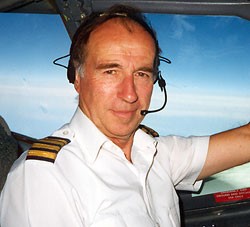
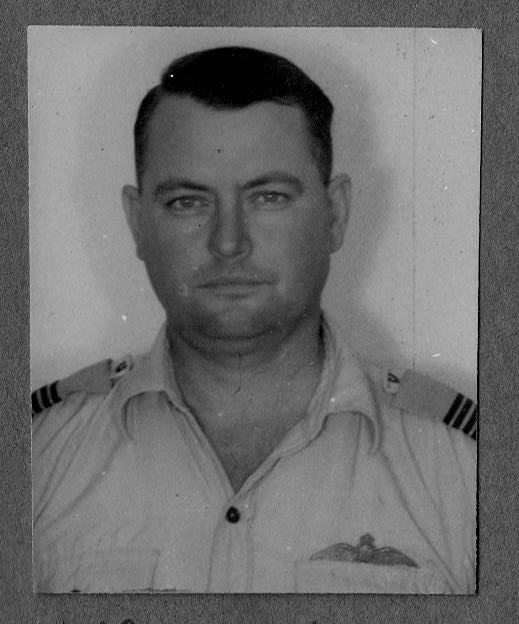
 between church steeples in a plane that was built to be flown at 30,000
feet – and yet he was flying it as if it was a fighter.
between church steeples in a plane that was built to be flown at 30,000
feet – and yet he was flying it as if it was a fighter.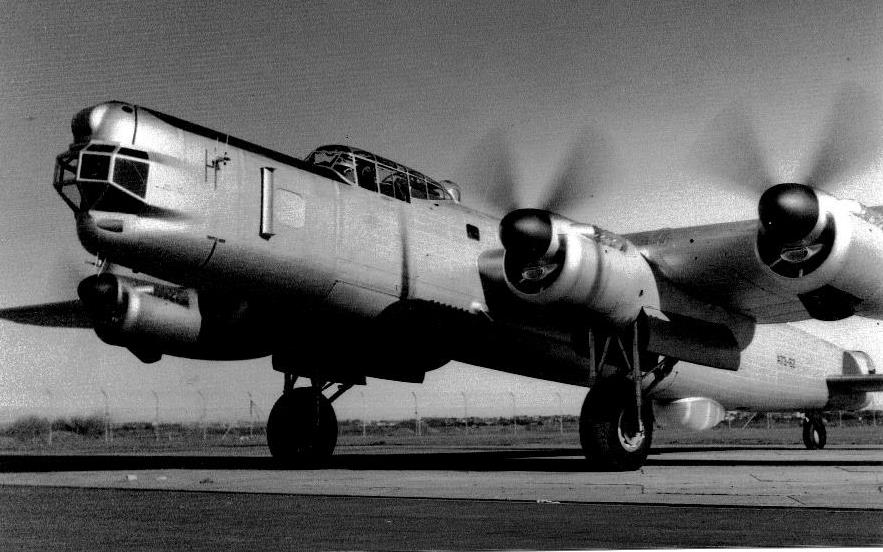 night
flying. Later I found out why. Although he had flown the wartime Halifax
extensively at night, the Long Nose Lincoln seemed to spook him and he
had difficulty in judging the flare and hold-off height at night. One
day in March 1954, an RAF Canberra bomber disappeared while flying from
Momote atoll north of Papua New Guinea, to the US military base of
Kwajalein Atoll in the Marshall Islands of Micronesia. In those days,
Kwajalein was the main Central Pacific base from where US aircraft and
ships were dispatched to support Hydrogen bomb testing on Bikini and
other Micronesian atolls.
night
flying. Later I found out why. Although he had flown the wartime Halifax
extensively at night, the Long Nose Lincoln seemed to spook him and he
had difficulty in judging the flare and hold-off height at night. One
day in March 1954, an RAF Canberra bomber disappeared while flying from
Momote atoll north of Papua New Guinea, to the US military base of
Kwajalein Atoll in the Marshall Islands of Micronesia. In those days,
Kwajalein was the main Central Pacific base from where US aircraft and
ships were dispatched to support Hydrogen bomb testing on Bikini and
other Micronesian atolls. 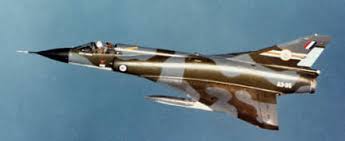 the RAAF, giving it a sustained super-sonic capability in its fighter
force. At the same time, there were major advances in systems and
propulsion. The 111-O for Australia and the 111-E for the French air
force came off the production line at Bordeaux, France at virtually the
same time, with the O variant beating the E by a few days. While the
airframe/engine combination was the same for both, the systems were very
different, and the E would be limited to the European environment while
the O was planned for the tropics. These differences suggested the need
for independent flight test programs, and when this was agreed, 111-O #1
was fitted (during production) with instrumentation aligned to
measurement of performance, while 111-O #2 was fitted with a simpler
system aimed at evaluation and performance of the RAAF nav/attack
systems.
the RAAF, giving it a sustained super-sonic capability in its fighter
force. At the same time, there were major advances in systems and
propulsion. The 111-O for Australia and the 111-E for the French air
force came off the production line at Bordeaux, France at virtually the
same time, with the O variant beating the E by a few days. While the
airframe/engine combination was the same for both, the systems were very
different, and the E would be limited to the European environment while
the O was planned for the tropics. These differences suggested the need
for independent flight test programs, and when this was agreed, 111-O #1
was fitted (during production) with instrumentation aligned to
measurement of performance, while 111-O #2 was fitted with a simpler
system aimed at evaluation and performance of the RAAF nav/attack
systems.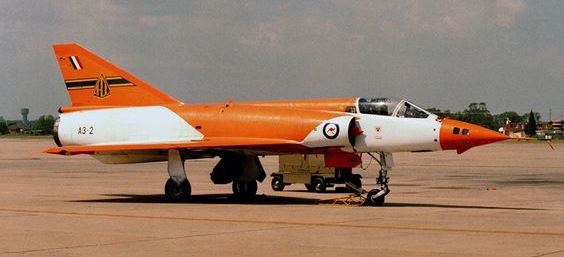
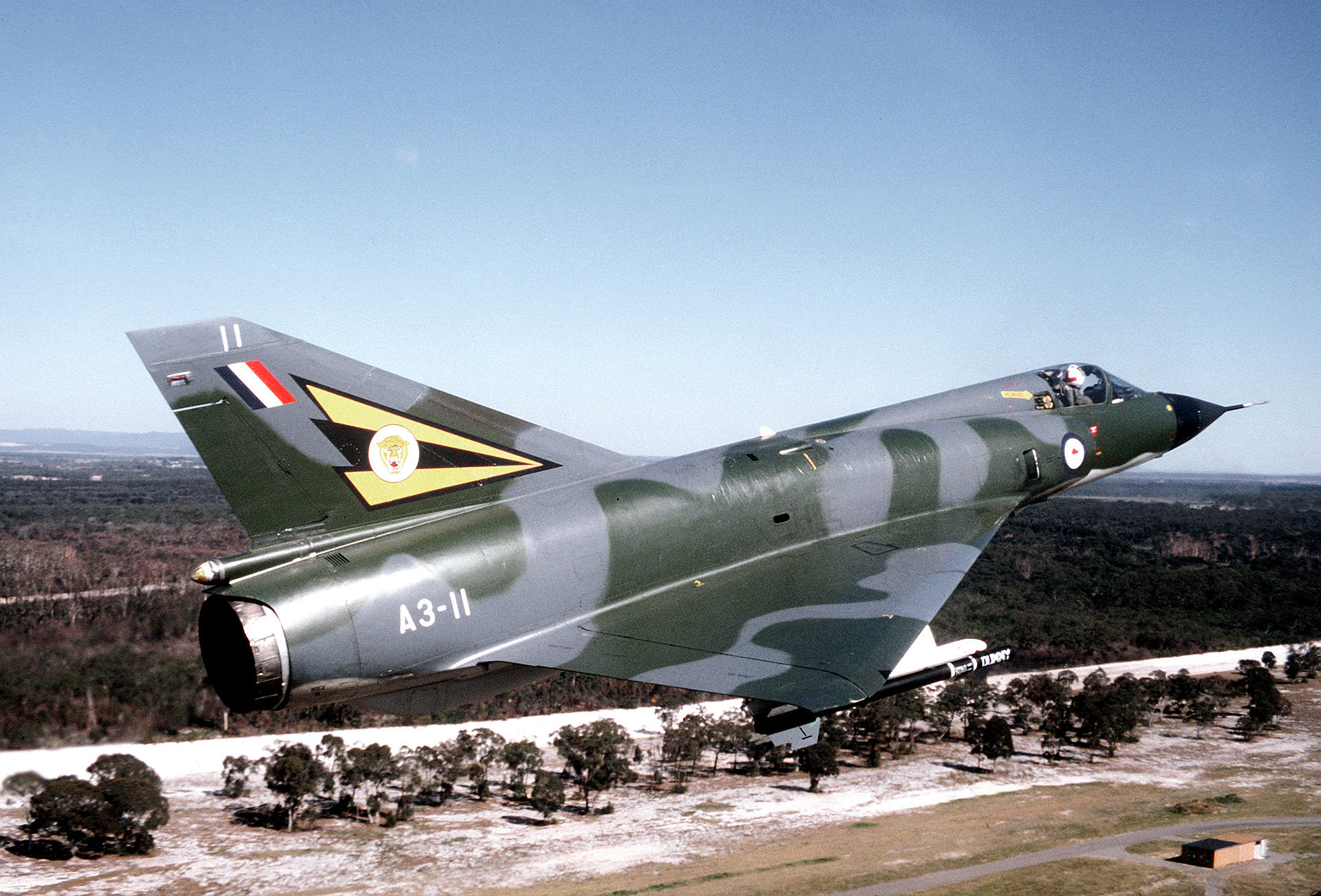
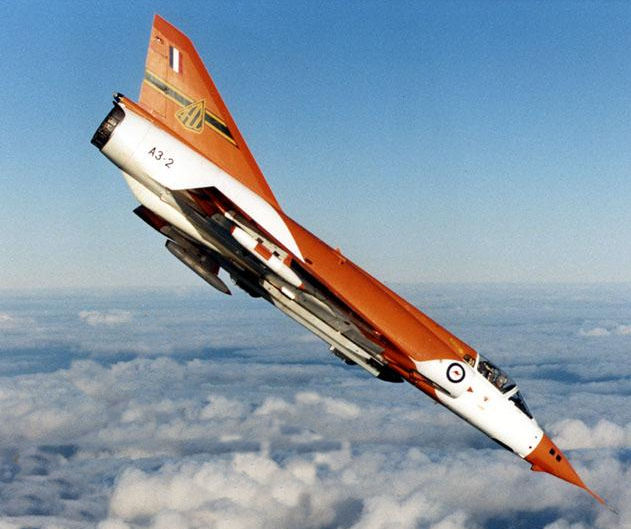 approximately one mile for every 1000ft of altitude lost. The standard
flameout pattern requires the aircraft to be over head the runway at 90°
to the runway heading at an altitude of not less than 15,000ft AGL.
approximately one mile for every 1000ft of altitude lost. The standard
flameout pattern requires the aircraft to be over head the runway at 90°
to the runway heading at an altitude of not less than 15,000ft AGL. 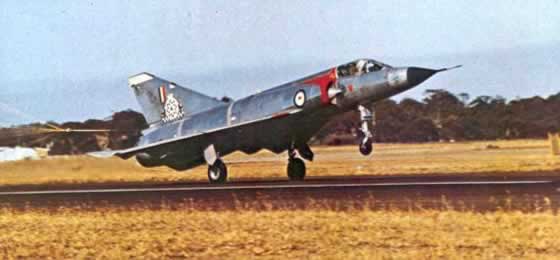 about three very long seconds there were some reassuring clunks and
green lights, and a second or so later the bump of touchdown at 150kt
(278km/h) on the underrun. The aircraft rolled approximately 44 metres
to reach the runway threshold and continued down the runway. There was
no need for a brake chute, the aircraft coming to a stop under gentle
braking halfway along the runway.
about three very long seconds there were some reassuring clunks and
green lights, and a second or so later the bump of touchdown at 150kt
(278km/h) on the underrun. The aircraft rolled approximately 44 metres
to reach the runway threshold and continued down the runway. There was
no need for a brake chute, the aircraft coming to a stop under gentle
braking halfway along the runway. 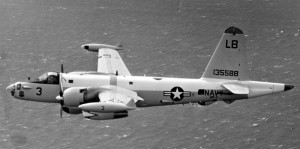 island
in between including Hawaii, our home port, Midway, Wake, Guam, the
Philippines, Japan, Taipei, Okinawa, Vietnam, the Aleutians, and many
other smaller islands which are just dots on a chart.
island
in between including Hawaii, our home port, Midway, Wake, Guam, the
Philippines, Japan, Taipei, Okinawa, Vietnam, the Aleutians, and many
other smaller islands which are just dots on a chart.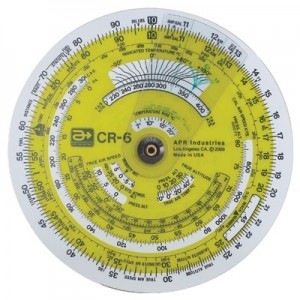 (emphasis on “dead”). During preflight briefing we would gather what
little weather info was available in those days before satellites. The
weather folks would give us their best guesstimates of the winds based
on reports from ships at sea and other aircraft and we would plot an
initial heading. After launching (Navy lingo for takeoff) we’d fly that
heading and plot an assumed course and use any land-based navaids that
were still in range for a cross check. About 150 miles out to sea we
would lose the land-based signal and would then rely on the navigator’s
“How-Goes-It,” a running log of our position, fuel burn, ETA and “point
of no return.” (“Forget it, guys. We ain’t got enough gas to make it
back.”)
(emphasis on “dead”). During preflight briefing we would gather what
little weather info was available in those days before satellites. The
weather folks would give us their best guesstimates of the winds based
on reports from ships at sea and other aircraft and we would plot an
initial heading. After launching (Navy lingo for takeoff) we’d fly that
heading and plot an assumed course and use any land-based navaids that
were still in range for a cross check. About 150 miles out to sea we
would lose the land-based signal and would then rely on the navigator’s
“How-Goes-It,” a running log of our position, fuel burn, ETA and “point
of no return.” (“Forget it, guys. We ain’t got enough gas to make it
back.”)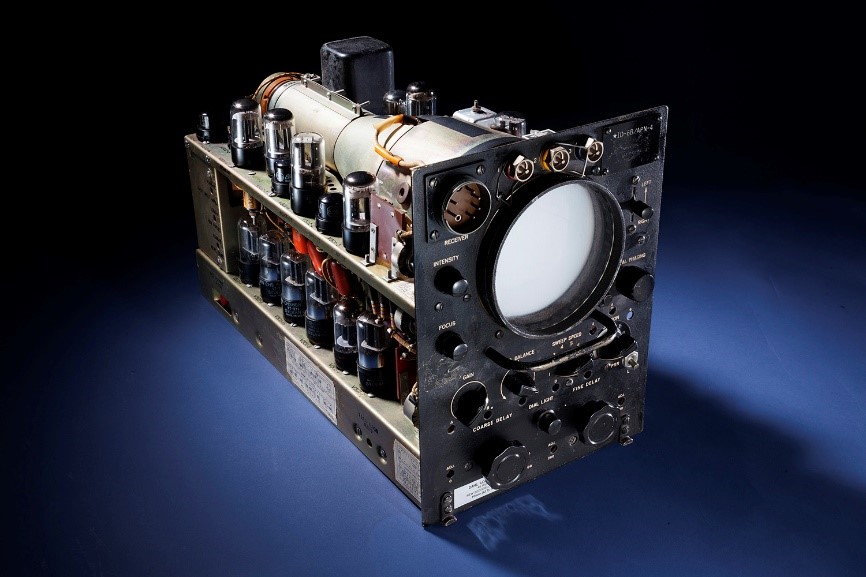 same thing with two other stations and get another line of position. If
the LORAN operator is careful and the atmospheric conditions are
acceptable, the two lines of position should intersect on the beach at
Waikiki, or within a few miles. The trouble with LORAN was that the
signals were in the HF band and very susceptible to interference from
electrical storms and static. Often, when we needed it most the signals
were unreadable.
same thing with two other stations and get another line of position. If
the LORAN operator is careful and the atmospheric conditions are
acceptable, the two lines of position should intersect on the beach at
Waikiki, or within a few miles. The trouble with LORAN was that the
signals were in the HF band and very susceptible to interference from
electrical storms and static. Often, when we needed it most the signals
were unreadable.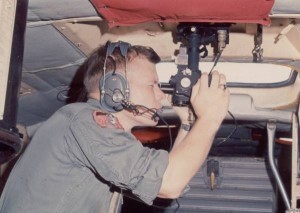 noting the exact time of the sighting, you’d look in the almanac for a
line of position. Quickly then, you’d pick another star about 90 degrees
from the first and shoot it the same way, now having two lines of
position that, like LORAN, should intersect at your “fix.”
noting the exact time of the sighting, you’d look in the almanac for a
line of position. Quickly then, you’d pick another star about 90 degrees
from the first and shoot it the same way, now having two lines of
position that, like LORAN, should intersect at your “fix.”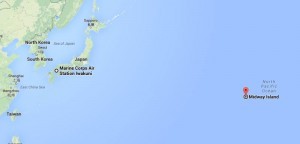 o
get a fix for hours. Our max range was just a little bit more than 2400
miles and we all figured we’d have to ditch if we were off course by
very much. If you look on a globe you’ll see that there is no place to
divert along that route, just vast, empty ocean. The navigator kept
giving the pilot headings to fly, using God only knows what instinct and
after what seemed like an eternity we were able to tune in a radio
station in Yokohama and get a bearing. Turns out we were less than 50
miles off course and were able to get to Iwakuni Naval Air Station with
gas still in the tanks. Nice job, Harry, wherever you are!
o
get a fix for hours. Our max range was just a little bit more than 2400
miles and we all figured we’d have to ditch if we were off course by
very much. If you look on a globe you’ll see that there is no place to
divert along that route, just vast, empty ocean. The navigator kept
giving the pilot headings to fly, using God only knows what instinct and
after what seemed like an eternity we were able to tune in a radio
station in Yokohama and get a bearing. Turns out we were less than 50
miles off course and were able to get to Iwakuni Naval Air Station with
gas still in the tanks. Nice job, Harry, wherever you are!